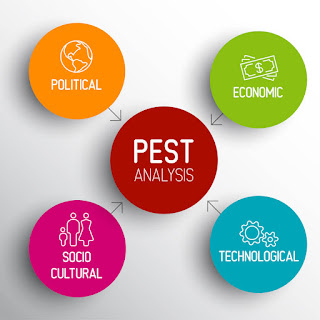
There are countless reasons why a healthcare organization would want to perform quantitative market research. Top catalysts include a desire to pivot to expand market share or to review current performance and determine potential areas for improvement. In both scenarios, The Brooks Group is a top healthcare consulting firm that performs PEST analysis on a client’s behalf to aid in creating a roadmap with a holistic review of external factors that directly impact efficacy.
Utilizing PEST Analysis to Synthesize Information
Healthcare organizations don’t work in a vacuum. They’re often influenced by and have consequential influence over the communities they serve. Decisions made at the executive level not only determine employee performance but can also affect health outcomes in their communities.
PEST analysis strives to review the multiple external components that influence an organization’s future course of action. Key stakeholders can confidently draft strategies that are not only informed but beneficial both for the organization and the surrounding community, by breaking down the market research into the following four core pillars:
- Political factors
- Economic factors
- Sociocultural factors
- Technological factors
Understanding Each Component of PEST Analysis
Crafting a healthcare strategy that balances the needs of a community with those of an organization is a critical skill. The Brooks Group frequently performs PEST analysis that provides key insights into those individual factors most likely to impact business goals and operational constraints.
Political Factors
Political factors can vary by location but usually include government healthcare subsidies, employment regulations, and consumer protections. Understanding whether subsidies are growing or shrinking, or that a new employee tax classification is coming, can help pharmaceutical market research companies understand how payroll requirements will impact labor costs or general revenue in the coming years.
Economic Factors
Economic factors typically refer to internal costs that a healthcare organization must manage. Anything from benefits, to interest rates from a redevelopment loan, can influence long-term goals and spending strategies. However, external scenarios also exist. For example, massive layoffs in a nearby town might see patient behaviors shift from prioritizing preventative or in-patient care and instead divert to urgent care facilities.
Sociocultural Factors
As communities across the nation continue to diversify, understanding how to properly engage with them and effectively convey healthcare messaging is a priority. Engaging in a PEST analysis can aid healthcare organizations in better identifying communication gaps — whether referencing language barriers or cultural value shifts — to ensure that the community trusts your organization and has adequate access to care.
Technological Factors
The healthcare industry continues to make strides with cutting-edge technologies that can improve patient care, communications, and interoperability between healthcare networks. And as more patients are demanding direct access to not just healthcare workers, but to their medical records, organizations need to determine how best to integrate these features without violating privacy policies or reducing the quality of care.
Building for the Future
Creating a 21st-century healthcare firm that’s adaptive and responsive to the community it serves is what’s going to set successful organizations apart as leaders in their respective fields. PEST analysis is critical because it provides a comprehensive macro approach that ensures your organization can make informed decisions that continue to move your business forward. The Brooks Group provides holistic support for healthcare organizations that includes support for new hire onboard training and account management training to build a stronger workforce.
This blog was originally posted on https://thebrooksgrouponline.com/2021/05/pest-analysis-in-healthcare-market-research/







